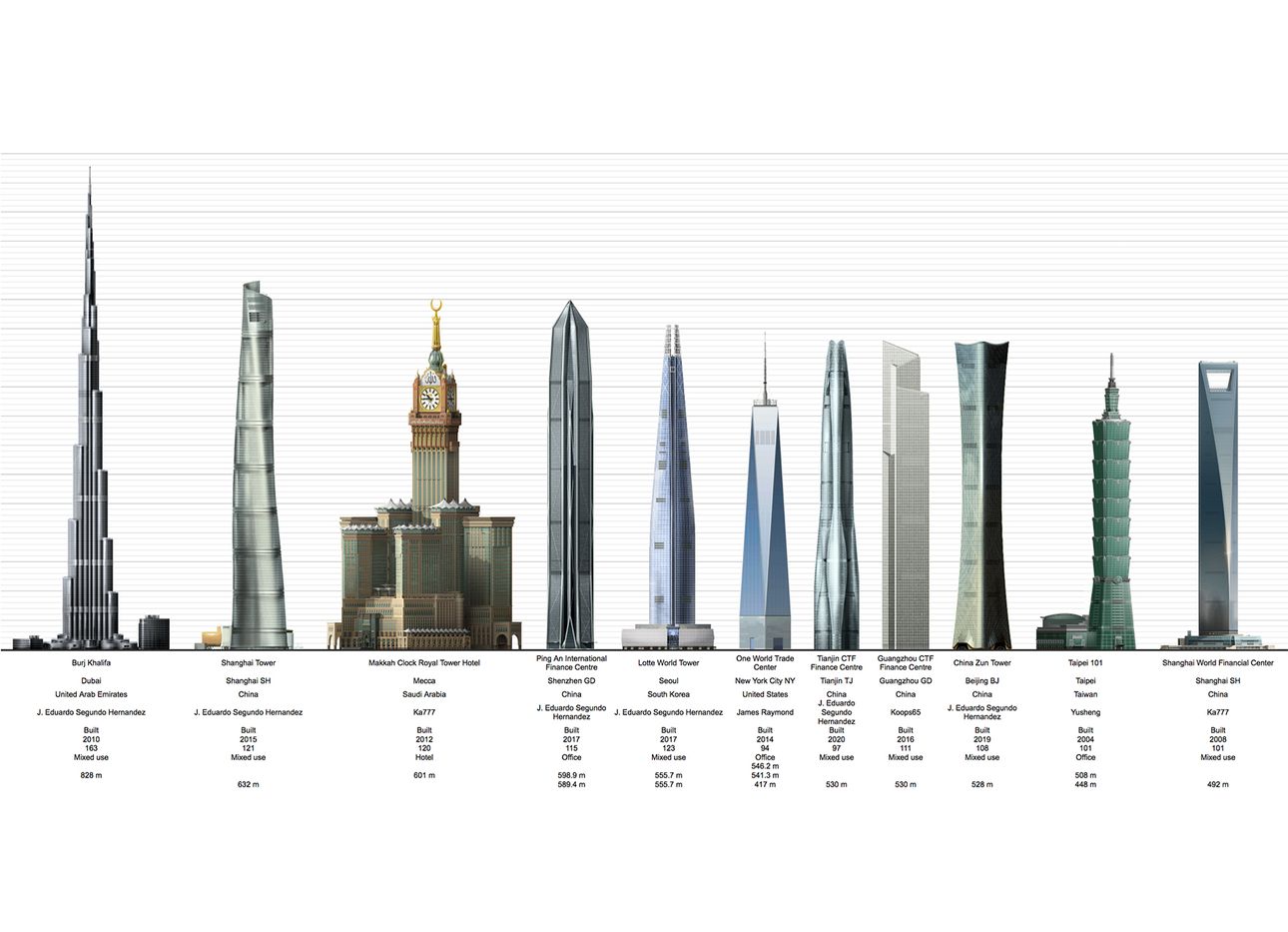
For a Website Tracking the Tallest Buildings in the World, Size Matters
With their audacious, gravity-defying forms, skyscrapers have captured the public’s imagination for more than a century. But the structures are also symbols, and with varying, often mixed messages. In New York, the Empire State Building became an icon almost as soon as it was completed, in 1931, signaling civic unity and hope during the Great Depression; today’s supertall apartment buildings on Billionare’s Row, located just south of Central Park, double as outsize emblems of self-importance. To squabble over skylines and the inherent value of their constituents, a growing number of (mostly male) tall-building enthusiasts log onto Skyscraper Page, a zany website with a skyscraper discussion forum that has spread to some 100,000 threads. But what’s the point of obsessing over big, shiny objects if you can’t pull them out and compare them side by side?
That ability is what gives this site its singular appeal. In addition to a global, ever-growing database of skyscrapers, it invites users to submit elevation-style diagrams of towers past, present, and future, created according to strict regulations and drawn to a one-pixel-per-meter scale. (The illustrations’ flat, blocky appearance echoes the site’s overall design, which has seemingly remained unchanged since its launch, in 1997.) Users can evaluate the structures on a local or international scale; there’s even a World Skyscraper Construction page that tracks in-process designs. Once queried, the buildings appear in a linear chart, from biggest to smallest, against a series of lines that denote their stature. Only basic information appears—there’s currently no way to search by architect, style, or function—leaving visitors to judge the structures by height and appearance alone.
That’s not to say the site isn’t educational. Scrolling through the World’s Tallest Buildings 2022 list, for instance, it’s clear that Asia has supplanted America as stratosphere-reaching architecture’s home base. The Burj Khalifa, in Dubai, continues to hold the crown of world’s tallest, as it has since 2010. Users might notice that Malaysia’s Petronas Towers, the biggest from 1998–2004, are now 17th. But they’re still the world’s largest pre–21st-century architectural feat: The 16 buildings ahead of it are all post-millennial. You have to go to the 10th-tallest building, Taipei 101, to find a building completed in the first decade of the 2000s.
The diagrams have even found a use beyond the website. Its founder, a Canadian programmer named Dylan Leblanc, has licensed the images to publications including National Geographic and Wired, and printed them on posters that have been sold at Seattle’s Space Needle and the Metropolitan Museum of Art. Perhaps it isn’t just size that matters, but what you do with it.